When I try to graph Shares vs. Time (formatted as 4:56pm, e.g.) in a bubble chart, the chart that is produced has the x-axis displaying 10, 20, 30, and 40 -- not the time values in the Time vector. Every other vector graphs out fine.
This is what I typed in:
symbols(reposts$Time, reposts$Shares, circles=reposts$Bubble.Size, inches=.5,
fg="3", bg=(reposts$Lineup), xlab="Time", ylab="Shares")
I'm wondering if there's a problem with how the elements in my "time" column are formatted. Does anyone have any ideas?
ETA: Because I'm new here, I'm unable to post screenshots atm. Here's the data I'm working with:
ETA2: Screenshots posted.
DATA$Time
10:42am, 7:57pm, 6:46pm, 10:37pm, 12pm, 9:06pm, 2:04pm, 7:20pm,
7:46pm, 9:18am, 1:11pm, 9:02pm, 6:05pm, 9:57pm, 11:22am, 7:16pm,
1:33pm, 10:11pm, 8:18am, 4:13pm, 1:13pm, 8:08pm, 12:07pm, 6:58pm
3:32pm, 9:38pm, 12pm, 7:12pm, 3:37pm, 8:30pm, 1:07pm, 9:53pm,
11:07am, 6:33pm, 6:35pm, 12:48pm, 6:31pm, 10:01pm, 11:34am, 7:26pm,
39 Levels: 1:07pm 1:11pm 1:13pm 1:33pm 10:01pm 10:11pm 10:37pm 10:42am
11:07am 11:22am ... 9:57pm
My code:
symbols(DATA$Time, DATA$NUMBERSET1, circles=DATA$NUMBERSET2, inches=.5,
fg="3", xlab="Time", ylab="NUMBER SET 1")
Output: A bubble chart with the correct labels/numbers on the y-axis but labels of 0-40 on the x-axis.
